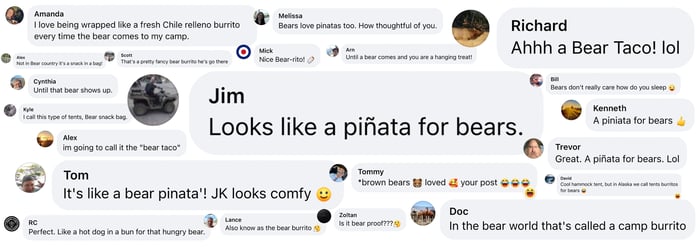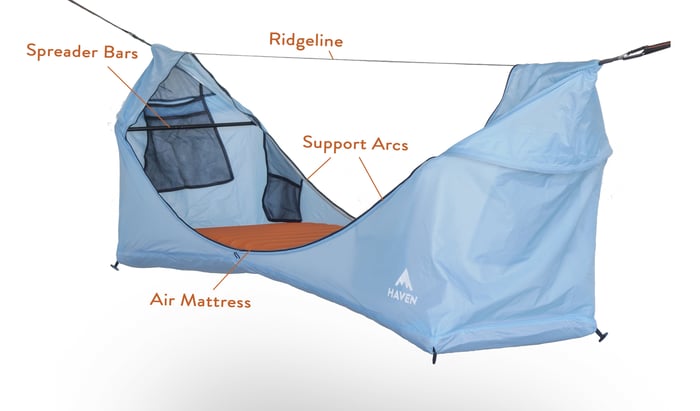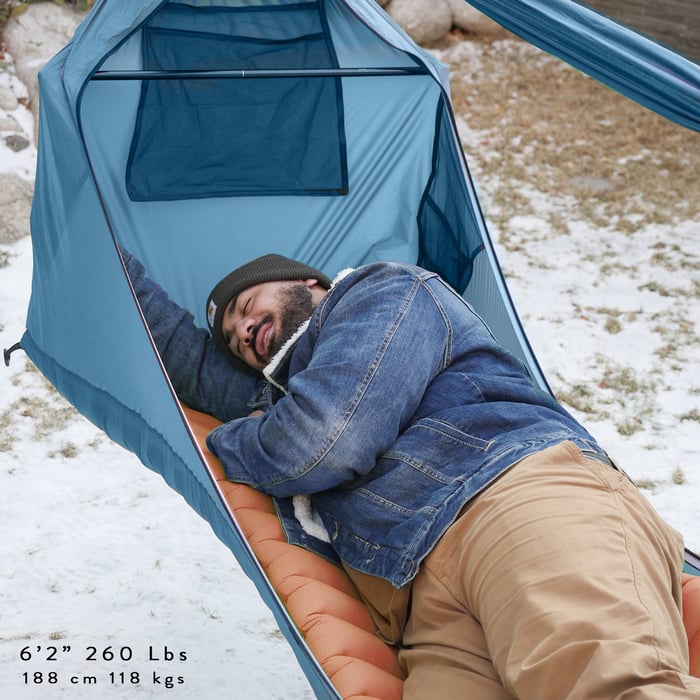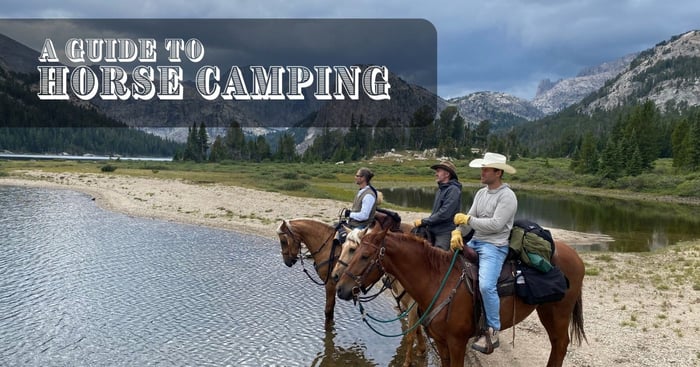Bear piñata, bear burrito, bear taco, or bear snack… Of all the great things people could say about our innovative system, these are some of the most common comments we see on social media 😅😂. At first, I thought it was some weird Russian bot campaign. Nope! These are real people all saying more or less the same thing. BEARS!! Some say it as a joke, while others may have real concerns.
In this post I'll dive into some of the do's and don'ts of camping in bear country. How to stay safe and sleep like Goldilocks in a bed that is "Juuuust right."
Here are the facts:
1. Bears live in the woods.
2. You absolutely need to practice bear safety.
3. If you don’t follow #2, hammocks offer the same level of protection as traditional tents...none!

Animal sightings are one of the highlights of camping and exploring open space. Last summer my son and I were in Washington State and watched an adolescent black bear grazing in a field for about 10 minutes. It was a special moment. (See the grainy cellphone image above).
Bears and other amazing animals are best enjoyed from a distance and during the day. So here are some tips for staying safe while camping in bear country. This list applies to hammock campers as well as ground dwellers.
Keep a clean camp.
- Never bring food into your hammock or tent.
- Sleep at least 100 feet (30 meters), - and preferably upwind from - where you cook, wash dishes, and store your food.
- Store food up and away from camp. At least 10 feet in the air and 4 feet from any branches. Some campsites may also have bear-proof metal boxes on ground level.
- Along with food, pack personal items (like toothpaste or deodorant), food scraps, and utensils in your food cache.
Be alert.
- Avoid bear signs while picking a campsite. Scat or tracks.
- Don’t sleep on game trails.
- Sleep with bear spray close by and readily accessible.
- Use a flashlight when moving around camp at night and make plenty of noise to alert a bear of your presence.
In most instances of campsite interaction, bears are just following their nose. They don’t see people as a food source but are curious about the smells we leave around camp. A well-managed campsite can be a very safe place.
Tent or Hammock?
Again, bears are not interested in you. They want your food. If your food is in your tent or hammock, a bear might just pay a visit. At the end of the day, a hammock or tent is a small obstacle for a motivated bear. I’d put lightweight nylon somewhere between straw and sticks in the story of the Three Little Pigs. Not much protection there! But bricks are hard to pack into the backcountry.
With some creative rigging, the Haven Tent system can be pitched high above the ground, as we did in our Yellowstone adventure. We still followed the rules of a clean camp but liked the challenge and novelty of hanging a high camp.

Haven Tents are designed to be pitched no higher than 18 inches (45 cm) from the ground. Probability of injury or death from falling increases exponentially with added height. We had fun rigging a high camp, but were much more likely to hurt ourselves falling than from a bear encounter on ground level.
More and more Haven Tent Adventures are happening each week. We are hard at work to make the Haven Tent system the most comfortable outdoor sleep system on the market. It is up to you to make it the safest!
Thank you!
Derek
Just for fun, I posted the banner image of this blog post on the Hammock Forum Facebook page. Here are some of the responses from some real hammockers.

“Bears, beets, Battlestar Galactica”


.png)


